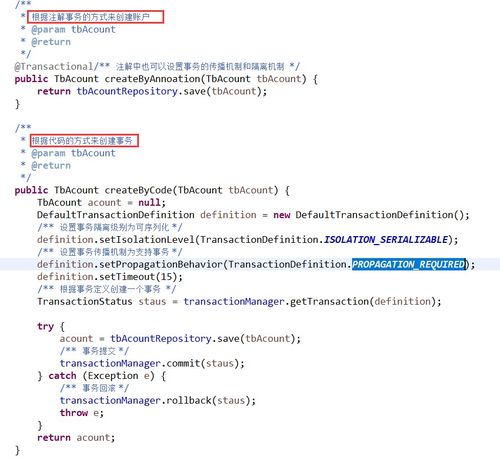您所在的位置:首页 - 生活 - 正文生活
spring-data
![]() 温轮
2024-04-25
【生活】
129人已围观
温轮
2024-04-25
【生活】
129人已围观
摘要Title:SpringDataProgramming:SimplifyingDataAccessinJavaApplicationsIntroduction:SpringDataisapopular
Title: Spring Data Programming: Simplifying Data Access in Java Applications
Introduction:
Spring Data is a popular opensource framework that simplifies the development of data access components in Java applications. It provides a highlevel abstraction over various data storage technologies and enables developers to interact with databases, NoSQL stores, search engines, and other data sources using a consistent and efficient API. In this article, we will explore some key concepts and best practices of Spring Data programming.

1. Overview of Spring Data:
Spring Data is built on top of the Spring Framework and provides a unified API for working with different data repositories. It offers support for both relational databases (via JPA) and NoSQL databases (such as MongoDB, Redis, Elasticsearch, etc.). By leveraging Spring Data, developers can write concise and readable code for data access operations, eliminating the need for boilerplate JDBC or ORM code.
2. Key Features of Spring Data:
2.1. Repository Abstraction:
The core feature of Spring Data is the repository abstraction, which allows developers to define interfaces for data access operations without writing any implementation code. Spring Data generates the necessary implementations at runtime based on naming conventions and query methods defined in the interfaces.
2.2. Query Methods:
Spring Data allows developers to define repository methods using a simple naming convention. It can automatically derive query logic by parsing method names. For example, findByFirstName(String firstName) will generate a query to retrieve objects by their first name.
2.3. Pagination and Sorting:
Spring Data supports pagination and sorting operations outofthebox. It provides convenient methods to retrieve a subset of data from large result sets, making it easy to implement pagination in web applications.
3. Working with Relational Databases:
3.1. JPA Repositories:
Spring Data JPA provides a powerful way to work with relational databases using the Java Persistence API (JPA). Developers can define JPA repository interfaces and Spring Data will automatically generate the necessary implementation code, including standard CRUD operations and dynamic query generation.
3.2. Entity Mapping:
To work with JPA, developers need to define entity classes that map to database tables. Spring Data offers annotations for entity mapping, such as @Entity, @Table, and @Column, allowing developers to map fields and relationships between entities and database tables.
4. Working with NoSQL Databases:
4.1. MongoDB Repositories:
Spring Data MongoDB enables developers to work with MongoDB, a popular NoSQL database, using a similar repository approach. Developers can define MongoDB repository interfaces and Spring Data will provide implementations for CRUD operations, query methods, and aggregation pipelines.
4.2. Redis Repositories:
Spring Data Redis provides a convenient way to work with Redis, an inmemory data store. It supports various Redis data structures, such as strings, lists, sets, sorted sets, and hashes. Developers can use repository interfaces to interact with Redis and leverage RedisTemplate for advanced operations.
5. Advanced Features and Integrations:
5.1. Auditing:
Spring Data supports automatic auditing of entities, allowing developers to track creation and modification timestamps. It provides annotations like @CreatedDate and @LastModifiedDate to enable auditing capabilities effortlessly.
5.2. Caching:
Spring Data integrates seamlessly with the Spring Framework's caching abstraction. By adding simple annotations like @Cacheable or @CacheEvict to repository methods, developers can enable caching of query results, which can significantly improve application performance.
Conclusion:
Spring Data is a powerful framework that simplifies data access in Java applications. By leveraging its repository abstraction and query methods, developers can write concise and readable code for various data sources. Whether you are working with relational databases or NoSQL stores, Spring Data provides a consistent and efficient way to interact with the data. By following the best practices and utilizing advanced features like auditing and caching, you can enhance your application's performance and maintainability.
Tags: 三国杀左慈 赤影妖刀姬 网易考拉海购是正品吗 造梦西游3逍遥修改器 怒之铁拳3秘籍
版权声明: 免责声明:本网站部分内容由用户自行上传,若侵犯了您的权益,请联系我们处理,谢谢!联系QQ:2760375052
上一篇: 编程要学多久才能找工作
下一篇: 电脑编程学校多少年龄可以学
最近发表
- 特朗普回应普京涉乌言论,强硬立场引发争议与担忧
- 民营企业如何向新而行——探索创新发展的路径与实践
- 联合国秘书长视角下的普京提议,深度解析与理解
- 广东茂名发生地震,一次轻微震动带来的启示与思考
- 刀郎演唱会外,上千歌迷的守候与共鸣
- 东北夫妻开店遭遇刁难?当地回应来了
- 特朗普惊人言论,为夺取格陵兰岛,美国不排除动用武力
- 超级食物在中国,掀起健康热潮
- 父爱无声胜有声,监控摄像头背后的温情呼唤
- 泥坑中的拥抱,一次意外的冒险之旅
- 成品油需求变天,市场趋势下的新机遇与挑战
- 警惕儿童健康隐患,10岁女孩因高烧去世背后的警示
- 提振消费,新举措助力消费复苏
- 蒙牛净利润暴跌98%的背后原因及未来展望
- 揭秘缅甸强震背后的真相,并非意外事件
- 揭秘失踪的清华毕业生罗生门背后的悲剧真相
- 冷空气终于要走了,春天的脚步近了
- 李乃文的神奇之笔,与和伟的奇妙转变
- 妹妹发现植物人哥哥离世后的崩溃大哭,生命的脆弱与情感的冲击
- 云南曲靖市会泽县发生4.4级地震,深入了解与应对之道
- 缅甸政府部门大楼倒塌事件,多名官员伤亡,揭示背后的故事
- 多方合力寻找失踪的十二岁少女,七天生死大搜寻
- S妈情绪崩溃,小S拒绝好友聚会背后的故事
- 缅甸遭遇地震,灾难之下的人间故事与影响深度解析
- 缅甸地震与瑞丽市中心高楼砖石坠落事件揭秘
- 揭秘ASP集中营,技术成长的摇篮与挑战
- 徐彬,整场高位压迫对海港形成巨大压力——战术分析与实践洞察
- ThreadX操作系统,轻量、高效与未来的嵌入式开发新选择
- 王钰栋脚踝被踩事件回应,伤势并不严重,一切都在恢复中
- 刘亦菲,粉色花瓣裙美神降临
- 三星W2018与G9298,高端翻盖手机的对比分析
- 多哈世乒赛器材,赛场内外的热议焦点
- K2两厢车,小巧灵活的城市出行神器,适合你的生活吗?
- 国家市监局将审查李嘉诚港口交易,聚焦市场关注焦点
- 提升知识水平的趣味之旅
- 清明五一档电影市场繁荣,多部影片争相上映,你期待哪一部?
- 美联储再次面临痛苦抉择,权衡通胀与经济恢复
- 家庭千万别买投影仪——真相大揭秘!
- 文物当上网红后,年轻人的创意与传承之道
- 手机解除Root的最简单方法,安全、快速、易操作
- 缅甸地震与汶川地震,能量的震撼与对比
- 2011款奥迪A8,豪华与科技的完美结合
- 广州惊艳亮相,可折叠电动垂直起降飞行器革新城市交通方式
- 比亚迪F3最低报价解析,性价比之选的购车指南
- 商业健康保险药品征求意见,行业内外视角与实用建议
- 官方动态解读,最低工资标准的合理调整
- 东风标致5008最新报价出炉,性价比杀手来了!
- 大陆配偶在台湾遭遇限期离台风波,各界发声背后的故事与影响
- 奔驰C级2022新款,豪华与科技的完美融合
- 大摩小摩去年四季度对A股的投资热潮








